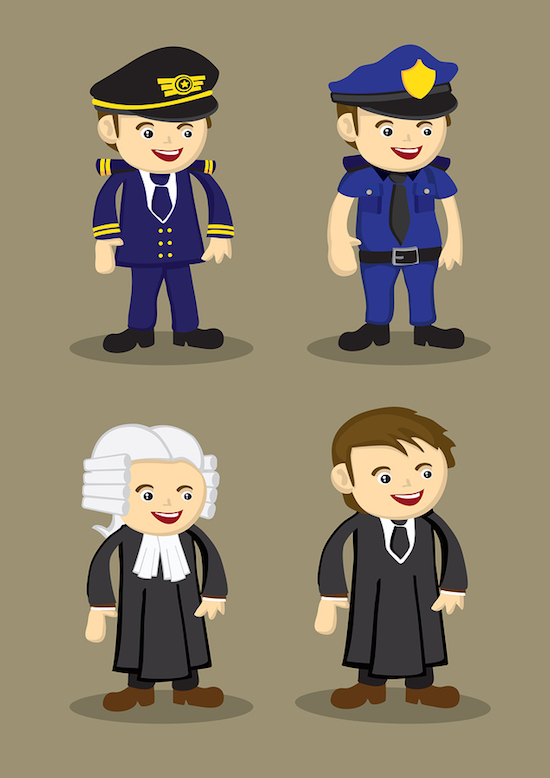Courtroom Dress Codes and Changing Times
Dress Codes for Courts
Courts throughout the United States commonly mandate the dress code for everyone who enters, including attorneys. As officers of the court, attorneys are held to high standards of professionalism and etiquette than non-attorneys. Traditionally, the U.S. Supreme Court required attorneys to wear "morning dress" consisting of striped trousers, gray ascot, waistcoat and a morning coat. This standard has been lessened since the 1970s but is still largely followed by government attorneys and the U.S. Department of Justice. Attorneys in all areas of practice should be familiar with the general customs in their area and the local court rules on appropriate dress in the courtroom.

Standards for men
Men are generally supposed to wear a suit of matching pants and jacket when appearing in court. A collared shirt and tie should accompany the suit. These days, courts typically allow a sport coat with slacks in lieu of a suit. Standards vary in different parts of the country so when in doubt, it is always acceptable to wear more conservative attire. For example, standards on the west coast are a bit more lenient. Grooming and hygiene are also important and demonstrate respect for the court's authority. Tattoos and piercings should be covered and/or removed whenever possible. As a general rule of thumb, the higher the court, the more formal the attorney's appearance should be.
Standards for women
Women have a wider range of available clothing options, but this may add to the challenge of meeting a court's dress code. While the law and its dress codes have been fairly slow to evolve, one notable development is that pants suits are now an acceptable alternative to skirts for female attorneys. Suits are always considered appropriate for women, just as with men, but female attorneys should avoid pairing the suit with low-cut or revealing blouses and tops. Skirts and dresses should not be more than two inches above the knee, and shoes should always be closed-toed. While hosiery is still the most conservative option, most dress codes no longer require it. Sleeveless shirts and dresses should always be accompanied by a jacket or cardigan, with sleeves below the elbow.
Courtroom attire versus client meetings
Formal attire in the courtroom is aimed at showing deference to the court and underscoring the importance of the court's authority. Client meetings, while equally important, require less scrutiny. Attorneys should carefully consider their clients' expectations, however. Many clients envision their lawyers to always be in a suit and tie. Employers also will have their own expectations about attire in client meetings, particularly in the corporate world. If the client is also a business person, a suit and tie would be appropriate. Alternatively, an attorney who dresses too formally may alienate a potential client that prefers and expects less formal dress.
In summary, be careful to choose attire that fits the situation. If you do not what the court and/or the client expect in terms of dress, always err on the side of caution and go with the more formal and conservative option.
Get More Clients With Legal Services Link
Create your FREE profile and get listed in our attorney directory to start receiving email notifications of relevant legal projects.

